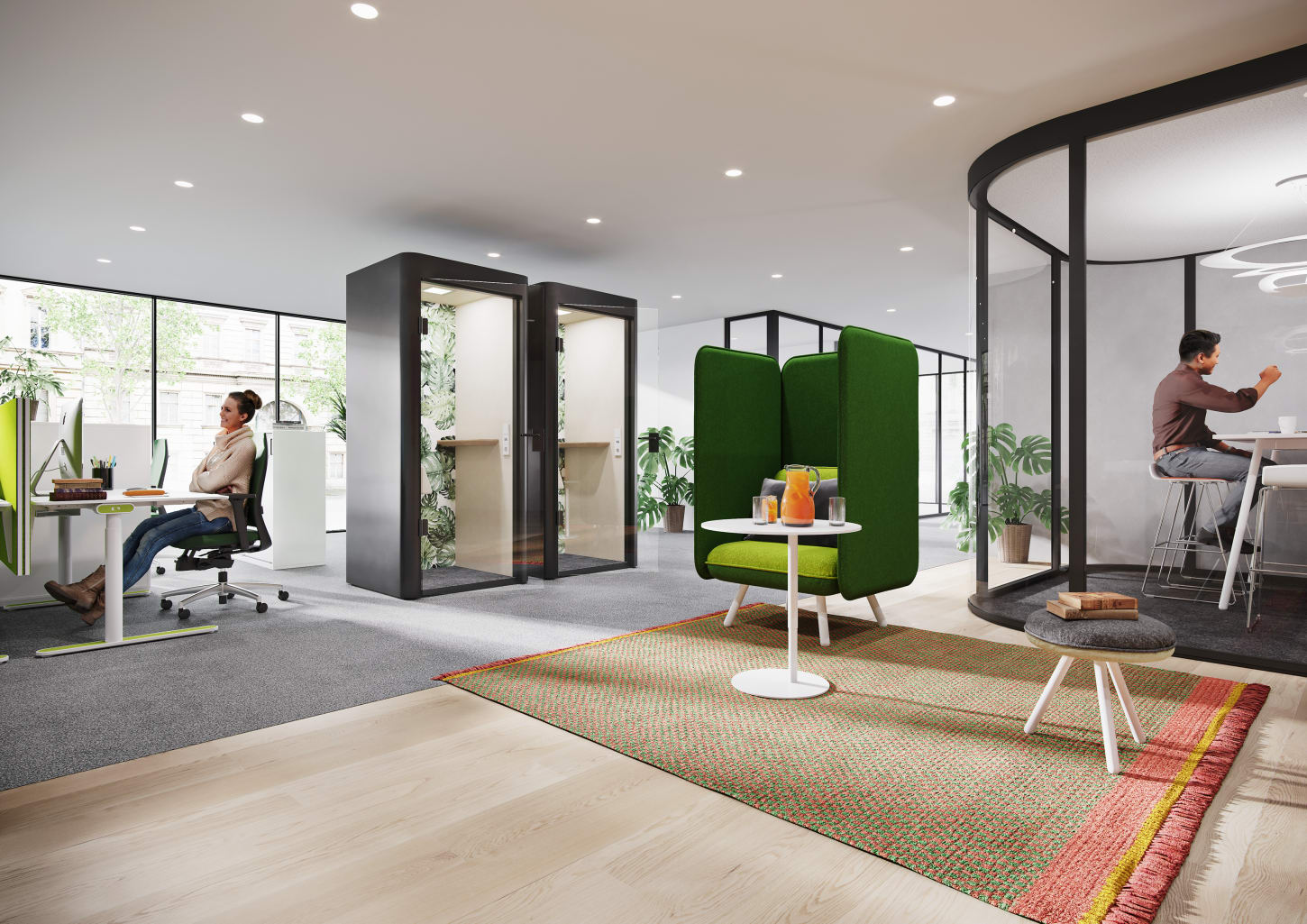
Good room acoustics

How looks and acoustics influence the space experience
Are spaces now being designed as efficiently and economically as possible? Or so that people feel comfortable in them? Both are possible! The thing is, even if offices these days are frequently subject to scrutiny in terms of how economical they are, reducing the area doesn’t need to have a detrimental effect on comfort and health.
Part of the office design remit is achieving the right balance between communication and concentration. After all, they are both key factors for successful teamwork. While colours, styles and materials are actually judged differently depending on taste, some furnishing factors have a direct influence on wellbeing from an objective view as well: good lighting, ventilation and acoustics always have a positive effect on individual experiences. To learn more about how to optimise room acoustics, we had a chat with acoustics expert Uwe Seubert, who gave us the key facts.
The first thing is that being able to hear clearly is essential. And then take a look at the materials used, or any measures that might be missing. It’s often relatively good acoustic absorption that causes problems with speech intelligibility. So a balance of absorption and screening is important to achieve optimum acoustics.
Indoor acoustics specialist Uwe Seubert offers his customers a 360° analysis, which considers as many factors as possible that influence employees: work organisation, process planning, spatial parameters – finishing up with the implementation of an outfitting concept. All in all, this is an interdisciplinary team project for which he is proud to be cooperating with König + Neurath.
Since many factors play a role, a variety of measures can be put in place to achieve the desired outcome. So there is no one-size-fits-all answer from the perspective of an acoustics expert – although they can point out how to eliminate problems: the relevant speech frequencies can be absorbed with acoustic material to reduce the reverb time. Sound shields are used to create acoustic barriers in the room. These diagrams of sound spread show how screens can be used for this purpose in a scenario.
Experts note that a good room acoustic is always about how a variety of measures interact. The first step is to realise that if you can see someone in the office without looking through a pane of glass or other transparent barrier, then you will also be able to hear them. For those nearest to you that’s exactly what you want, but when they are further away this is where disruption factors come into play. Here the key is to break up the direct sound path using barriers. This is helpful in itself, even if it still doesn’t constitute a comprehensive overall solution.
People experience noises differently depending on the situation. But noise is one of the most frequently cited disruption factors in the office. Good acoustics can be achieved with a wide range of measures – for instance floor coverings, textiles (curtains or acoustic art panels), as well as furniture (partitions, screens or acoustic cupboard fronts) and finally light fittings with sound absorbing properties. Furthermore all these factors offer multiple benefits: textiles and a variety of finish materials are often associated with a cosy feel, while screens or furniture functioning as a room divider create privacy. However you optimise the acoustics in your spaces, the added benefit is huge. We’d love to support you.
According to the German Workplace Ordinance and VDI guideline, the noise level for activities involving concentration at screen-based workstations for an average eight-hour day should be max. 55 dB(A). 55 dB(A) is a volume somewhere between quiet and normal speech.
